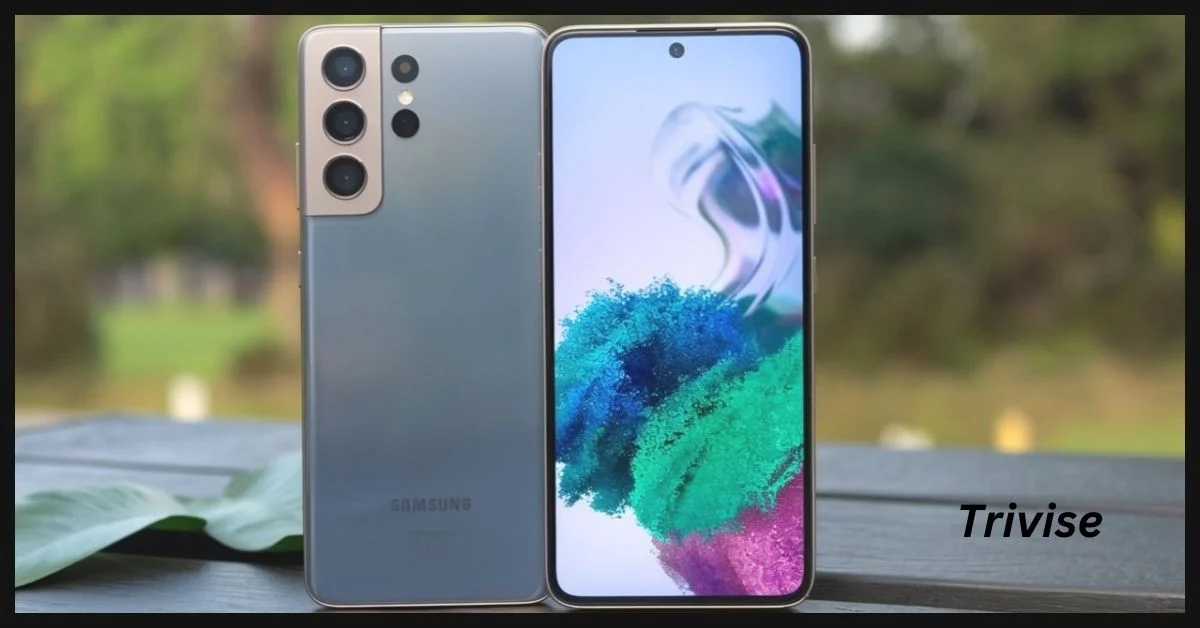In today’s world, having access to a reliable phone and internet service is no longer a luxury—it’s a necessity. Whether it’s for staying connected with family, accessing job opportunities, or seeking essential services, a smartphone and the internet are fundamental tools for success. However, for many low-income households, affording a smartphone and data plan can be a financial challenge. This is where government assistance programs like Lifeline and the Affordable Connectivity Program (ACP) come into play. Through these programs, eligible individuals can receive free 5G phones and free phone service, enabling them to stay connected to the digital world without financial burden.
This article will explore the ins and outs of free 5G government phones, how individuals can access them, and why these programs are crucial in today’s society. We will also take a closer look at the Lifeline program and its role in helping low-income families access essential communication services, including 5G phones, and why access to free phones is more important than ever.
The Importance of Access to Free 5G Phones
5G technology has been rapidly expanding, offering faster internet speeds, lower latency, and better connectivity than its predecessors, like 4G LTE. As more services shift online—from education to telehealth, job applications, and social connectivity—the need for modern 5G devices is becoming more crucial. Access to high-speed internet and the latest mobile technology is essential for individuals to participate in the modern digital economy.
For low-income households, the idea of owning a modern smartphone with 5G capabilities may seem out of reach. However, thanks to government programs designed to close the digital divide, free 5G government phones are now available to those who qualify. These devices allow users to access not only voice calls but also high-speed data for streaming, online learning, remote work, and staying in touch with loved ones—things that are essential in today’s connected world.
Programs like the Lifeline Program and the Affordable Connectivity Program (ACP) aim to reduce the barriers to entry for families and individuals who may otherwise struggle to afford the latest technology. Let’s dive deeper into these programs to understand how they work and how individuals can take advantage of them.
What Is the Lifeline Program?
The Lifeline Program is a government assistance program designed to make communication services more affordable for low-income individuals. It was established by the Federal Communications Commission (FCC) in 1985 as a way to provide affordable phone services to low-income households. Over the years, the program has evolved to include broadband internet service and smartphones as essential tools for communication.
Lifeline provides free phone service or heavily discounted phone services to eligible individuals. In addition to providing free or low-cost landline or mobile phone services, Lifeline also offers access to free government phones, which can be either smartphones or basic feature phones, depending on the provider.
Lifeline Program Eligibility Criteria
To qualify for the Lifeline Program, individuals or households must meet certain eligibility criteria. Generally, eligibility is determined by either income or participation in specific government assistance programs.
Here are the two main ways to qualify for Lifeline assistance:
- Income-Based Eligibility:
- Household income must be at or below 135% of the federal poverty guidelines. This can vary depending on the number of people in the household and the state of residence.
- Program-Based Eligibility:
- Households can also qualify if they participate in federal or state assistance programs. These programs include:
- Supplemental Nutrition Assistance Program (SNAP)
- Medicaid
- Supplemental Security Income (SSI)
- Federal Public Housing Assistance (FPHA)
- Veterans and Survivors Pension Benefits
- Tribal Assistance Programs
- Households can also qualify if they participate in federal or state assistance programs. These programs include:
What Does the Lifeline Program Offer?
Under the Lifeline Program, eligible participants can receive:
- A free 5G government phones (often a basic phone or a smartphone depending on availability).
- Free phone service (which can include voice calls, text messaging, and in some cases, data).
- Participants can also qualify for discounted broadband internet services, allowing them to access the internet at home, which is vital for job searches, education, and accessing healthcare.
Access to free 5G Government Phones Through Lifeline
In recent years, the Lifeline program has expanded to include 5G phones in response to the growing importance of high-speed internet and 5G connectivity. With a free 5G phone through Lifeline, individuals now have access to the latest mobile technology, ensuring they can participate in the digital world with minimal barriers.
Some of the Lifeline providers, like AirTalk Wireless, and Assurance Wireless, offer free 5G government phones to eligible individuals, along with free monthly data plans. This means that low-income families no longer have to worry about missing out on essential services that require high-speed internet access.
Affordable Connectivity Program (ACP)
Another key initiative to provide free 5G government phones is the Affordable Connectivity Program (ACP). Launched as an extension of the Lifeline program, the ACP is designed to provide low-income households with affordable internet service and connected devices. The ACP offers a $30 monthly subsidy for internet service for eligible households, which can be used to offset the cost of high-speed internet and devices like smartphones and tablets.
ACP and Free Phones
While the primary purpose of the ACP is to provide affordable internet access, it also includes provisions for free 5G government phones. Households that qualify for the ACP can receive free phones (including 5G phones) from participating providers, which helps ensure that every household can stay connected to essential services.
How to Qualify for the ACP
To qualify for the Affordable Connectivity Program (ACP), you must meet certain eligibility criteria, which can include:
- Participating in any of the federal assistance programs listed for Lifeline eligibility.
- Having a household income at or below 200% of the federal poverty level.
- If you’re a recipient of a Pell Grant, you may also qualify for the ACP.
Best Providers for free 5G Government Phones Through ACP and Lifeline
Several wireless providers participate in the Lifeline Program and ACP offering free 5G government phones to eligible individuals. These include:
- AirTalk Wireless: Known for offering free smartphones (including 5G models) and a free monthly data plan to eligible users, AirTalk Wireless is a top provider for free 5G government phones.
- Assurance Wireless: Another well-known provider that offers free 5G government phones and service to qualifying individuals through the Lifeline and ACP programs.
- Safelink Wireless: Provides free phones and affordable service to low-income households. Safelink may offer both 4G and 5G smartphones depending on availability.
- Q Link Wireless: Offers free smartphones with data plans for eligible Lifeline program participants and may also provide 5G phones.
Who Has the Best Free Government Phones?
When it comes to deciding which provider has the best free 5G government phones, the choice depends on several factors including coverage, phone model options, customer service, and additional benefits like high-speed data plans. AirTalk Wireless and Assurance Wireless are often considered among the top providers fofor free 5G government phones, thanks to their competitive plans and range of devices.
It’s important to compare offerings to find the best fit for your needs. Some providers may offer higher data allowances or specific phones that suit different preferences. Whether you prioritize a larger screen, faster internet speeds, or a specific brand of smartphone, researching and choosing the right provider is essential.
How to Apply for a Free Government 5G Phone
The process of applying for a free government 5G phone can be straightforward. Here’s a general step-by-step guide:
- Check Eligibility:
- Ensure that you meet the eligibility criteria for Lifeline or ACP, based on income or participation in qualifying government assistance programs.
- Choose a Provider:
- Research the participating Lifeline and ACP providers (like AirTalk Wireless, Assurance Wireless, or Safelink) to determine which one offers the best phone and service plans for your needs.
- Apply Online or In-Person:
- Many providers allow you to apply online through their websites. Alternatively, you can apply in person or over the phone with some providers.
- Submit Documents:
- Provide necessary documentation to prove eligibility (such as proof of income or participation in a qualifying program).
- Wait for Approval:
- Once your application is submitted and verified, you’ll be approved to receive your free 5G government phones and service.
Conclusion
In conclusion, free 5G government phones are a crucial lifeline for many low-income individuals and families, providing them with access to the digital world and essential services. Programs like Lifeline and the Affordable Connectivity Program (ACP) play a vital role in reducing the digital divide by making smartphones and high-speed internet accessible to those who need them most. With 5G technology now available, even those on limited budgets can stay connected, engaged, and empowered in the modern digital age.
FAQs
1. What is the Lifeline program?
The Lifeline Program is a federal assistance initiative that provides free or discounted phone services, including smartphones and wireless plans, to low-income households.
2. How do I qualify for a free government 5G phone?
To qualify, your household must meet the eligibility requirements for the Lifeline or Affordable Connectivity Program (ACP), typically based on income or participation in certain government assistance programs like SNAP or Medicaid.
3. Which providers offer free 5G phones through the Lifeline Program?
AirTalk Wireless, Assurance Wireless, and Safelink Wireless are some of the providers that offer free 5G phones through the Lifeline program and ACP.
4. What does the Lifeline program offer?
The Lifeline program provides free phones and monthly service (including voice and data plans) for eligible low-income individuals and families. It has expanded to include 5G phones and high-speed internet access.
5. Can I apply for a free government phone online?
Yes, you can apply online through the website of your chosen Lifeline or ACP provider. Make sure to have the necessary documentation ready to confirm eligibility.
6. Who has the best free government phones?
Providers like AirTalk Wireless and Assurance Wireless are highly rated for their service, free phone offerings, and range of 5G smartphones.











